The China Pakistan Economic Corridor (CPEC), a flagship of China’s ambitious Belt and Road Initiative that was officially launched in April 2015, promised to be a game changer. The economic corridor that would link Kashgar in Xinjiang to Gwadar in Baluchistan five years later has entered its second phase. While the first phase was essentially about electricity projects and railway lines the second phase has special emphasis on development of special economic zones, agriculture, industry, trade and science and technology. However there seems to be lack of clarity and question of long-term feasibility of the project. CPEC then remains a baffling project riddled with many ambiguities. It is all the more complicated because of China and Pakistan deepening relations. The China Pakistan nexus is becoming diversified and extends beyond geopolitics towards economic and commercial relations. This can be ascertained from the fact that amidst the unprecedented Covid-19 crisis Pakistan continues to support China and has assured people that pandemic will not impact the progress of CPEC.
The book China-Pakistan Economic Corridor of the Belt and road initiative: Concept, context and assessment by Dr Siegfried O Wolf is a timely intervention to study CPEC critically and unearth the ground realities which is beyond the official writings and rhetoric on the subject. The author makes a valiant attempt to study CPEC comprehensively and look beyond the rosy picture. However, at the heart of the book is also the idea of connectivity and how economic corridors can be bridgeheads among countries and also for regional integration. Author then assesses CPEC and that whether it fits into the concept of the Economic corridor. The book is quite comprehensive and comprises of ten chapters.
The first chapter is an exhaustive introduction that addresses the problem of lack of connectivity between the conflict-ridden south Asian nations. The author herein brings in the concept of economic corridor and its undeniable importance for the south Asian nations. He underscores that economic corridors play a key role in regional integration. However, the author elaborates that economic corridor is still at a nascent stage and is yet to gain momentum in South Asia. He further mentions though CPEC is the most advanced economic project under the ambit of Belt and Road initiative, skepticism remains regarding its overall success.
In second chapter the author explains the conceptual meaning of Economic corridors. He expounds that the concept of EC is not just an “infrastructural measure designed to permit the transport of commodities, but rather as a comprehensive development approach designed to foster industrial and other manufacturing capabilities”. At the end of the chapter the author gives summary of the key indicators of Economic corridor.
In the chapters three and four author explicates why Chinese and Pakistanis are enthusiastic about this mega project. He contends that Chinese motivations in carrying out CPEC is not just driven by economic interests but has geostrategic, political and security aims. CPEC is further embedded in the larger idea of “Chinese Dream” that aims to hark back the Chinese nation to its past glory and bring back “Pax Sinica” that is sincization of domestic and international world order. In Chapter four author analyses the factors behind Pakistan’s willingness to join CPEC. According to the author Pakistan thinks that its close-knit relations with China through CPEC will help upscale its floundering economy and its poor reputation in the international community. Pakistan thinks that its dependence on China will reduce economic asymmetries and it will achieve military parity visa-vis India.
Pakistan has placed its hopes on CPEC to improve not just its infrastructural needs but also bring political stability in the volatile nation. While presenting the rationale behind Chinese and Pakistani’s cooperation for the mega project, the author also exposes the major roadblocks and challenges in the implementation and functioning of CPEC. In chapters five and six the author sheds light on the multipronged challenges that CPEC faces. He highlights various flashpoints that ranges from the legal dimension of the controversial project as it passes through the disputed areas of Gilgit Baltistan and POK, to Pakistan’s myriad internal problems like lack of good governance, corruption, unhealthy civil and military relations and domestic terrorism.
According to author’s assessment, in Pakistan there is a longstanding fear amongst the local population that increased Chinese presence in public sphere will lead to economic and cultural domination. Author also elaborates on the CPEC’s adverse impact on the environment and how the quality of environment in Pakistan continues to deteriorate. Further the author also makes a lucid assessment of plethora of looming threats especially the Uighur conflict, global jihadist movement and the Baluchistan factor that will further impact the implementation of CPEC.
After giving a detailed picture of the project the book looks at two important external actors that is EU and Afghanistan. In chapter seven the author traces the genesis of EU and Pakistan’s relations and how they have evolved into development and economic cooperation. Herein the author introduces the Generalised Scheme of Preferences that allows the developing countries pay little or no duties on exports to the EU. Pakistan benefits from GSP since 2014 but is facing an imminent threat of losing the GSP+ status. The author highlights in detail how the implementation of CPEC projects violates the GSP+ principles. Chapter eight offers an insight into Chinese push for the inclusion of Afghanistan into CPEC. The author identifies that the major reason for China’s proposal for CPEC’s enlargement into Afghanistan is to have trilateral cooperation between Kabul, Islamabad, and Beijing. However the author underscores that the idea stands on a shaky ground, as Pakistan doesn’t support the extension of CPEC to include Afghanistan.
Chapter nine is thought provoking as it highlights the dilemmas of civil military relations in Pakistan. The author points out the institutionalization of the military’s formal role in the Pakistan’s political system and decision-making. The author observes that how project like CPEC is further hampering civilian control over military. He points out that due to lack of civilian control there remains secrecy and lack of transparency regarding the projects and routes under CPEC, which is leading to domestic criticism of the project. The author in the last chapter provides his final thoughts regarding CPEC and its future. The author gives a rather grim picture of CPEC’s future, as there seems to be plethora of unresolved and partly unaddressed problems. He concludes by highlighting the CPEC doesn’t fulfill the criterion of being an economic corridor and at best remains a ‘Narrow regional corridor’.
Dr Wolf in this first book length study of CPEC has dissected and meticulously studied the complex issue of economic corridors and CPEC. The book is written in a lucid manner with plenty of headings and sub-headings making it a seamless read. The book provides some thoughtful analysis intertwined with author’s insightful observations and hypothesis. Its a must read for both China and Pakistan watchers.

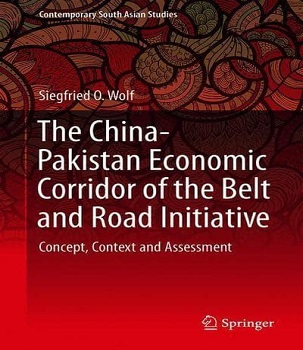


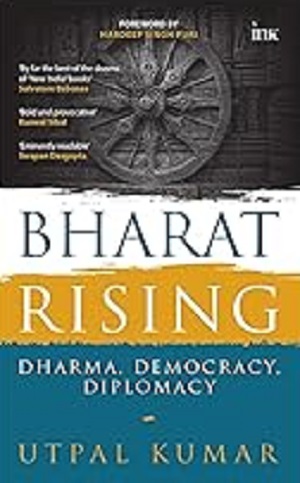

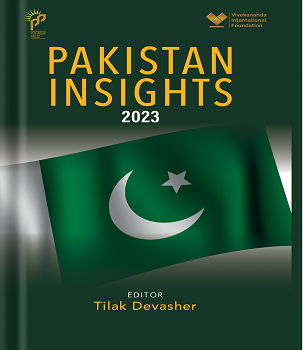
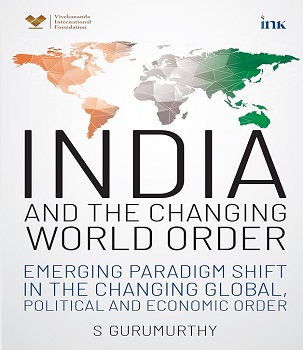


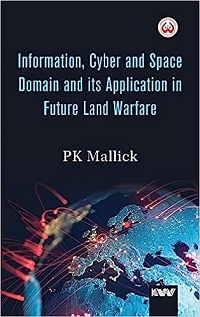
Post new comment